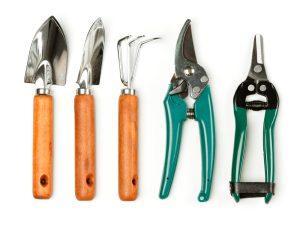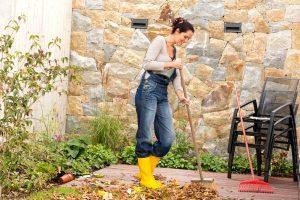Arborjet’s Horticultural Specialist, Matt Andrus, continues to share his knowledge to keep your plants healthy this Spring. Andrus is a member of Arborjet’s research and development team, devoted to the discovery and development of the most effective equipment, formulations and application methods.
Clean & Sterilize Your Tools
Cleaning your gardening tools regularly will drastically increase their life and effectiveness. Keeping pruners clean and sharp will allow plants to heal faster, reducing the chances of stress and infection. Disinfecting tools with rubbing alcohol, bleach, or a typical household disinfectant will help keep plant pathogens to a minimum. Pathogens or diseases on the blade can will be directly introduced and the pruning site, which could turn into a long‐term problem. Once the pruners have been sharpened and cleaned, apply oil to any moving parts.

It is equally important to keep shovels clean, as well as any other tool used in the soil. Diseases can be spread around the soil and root system. Use a wire brush with disinfectant to reduce the chances of creating long-term problems. To dissolve hard to remove rust, soak rusty parts in a pot of strong black tea for one hour. They should wipe-off clean.
Yard Waste Removal

Once the yard and garden beds are free of snow, collect leaves and any other plant material that has accumulated at the base of the plants. If you have a composting area, move all plant matter to this area. If you don’t have a composting area this is a good time to start one, as compost makes a fantastic addition to any plant at any time. Making your own compost helps save money and it always feels good to recycle!
Inspect for Winter Damage
Cold, snow and wind can damage plant tissue. Prune the dead or damaged tissue off, making small cuts in small increments to avoid pruning off too much. Remove only the dead or damaged material, not healthy green parts. Here are a few techniques to help distinguish live tissue from dead.
1. Look– Scratch a small piece of bark away to look for live green or white tissue. If the bark is black, grey or brown, it may be dead, so inspect further.
2. Listen– Starting at the furthest away from the stalk, start pruning and listen for snaps or cracks. If the pruner doesn’t cut easily or you hear a snap this could mean that there isn’t much moisture left in the limb, signifying a dead or dying branch.
3. Smell– Healthy branches that have been freshly pruned have distinct aroma, which varies by species, while dead branches have very little fragrance.
4. Touch– Feeling for moisture after you’ve made a cut can help determine whether a branch is alive or dead. If you see or feel moisture at the pruning site the chances of regenerating growth here is good.
Pruning

Pruning should be done mindfully. Although removing damaged or healthy material is quite easy, knowing when and when NOT to prune can sometimes be tricky. The plant will not die if pruned the wrong time of year but you may accidentally remove the part that allows the plant to flower. In landscape pruning, we can simplify it into two categories; plants that bloom on new growth and plants that bloom on old growth.
Knowing what species you are planting and their blooming patterns are important. If you aren’t sure what the species or varieties you have, you can prune and observe that plants response. For instance, a summer‐flowering shrub such as Rose of Sharon needs to be pruned before the buds swell, but a spring flowering shrub like Forsythia must be pruned right after flowering. Conifers are less time sensitive as they are not grown for their flowers. Simply prune back a branch to encourage a direction of growth.
New Planting Design & Bare Roots
This is a great time of year to consider available space for new additions. Bare root trees, shrubs and perennials are easy, cost effective ways to make some wonderful improvements to your landscape. Using bare root plants will help reduce injury during transplanting because they are dormant. It is crucial that you keep the roots and surrounding soil moist until the plant breaks dormancy and develops leaves. An easy way to thoroughly water your new bare root additions is to leave a garden hose on a trickle near the roots for an hour, thus saturating the soil to the desired moisture content and depth. Once leaves start to develop continue with normal watering practices.
Garden Shows
March is a great time of year to attend a gardening convention or flower show, such as The Boston Flower & Garden Show. These events are a fantastic way to learn about new cultivars, plant health products and to find local resources and professionals in your area that can help answer any question you may have.”
Do you have questions about spring cleaning or upcoming events? Contact us! You can also keep in touch with Arborjet on Facebook, Twitter and YouTube.

